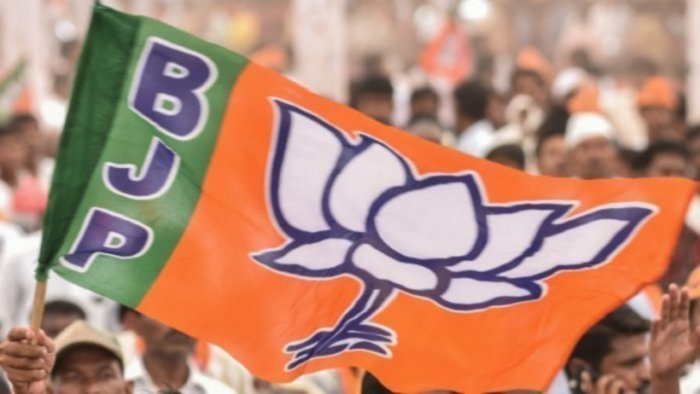With less than a month away from the polls, the BJP, facing anti-incumbency along with a rejuvenated Congress, has fielded 82 new faces
 Sagarneel Sinha
Sagarneel Sinha

Karnataka, the only southern State where the BJP has been able to come to power, will go to elections on May 10. While it is trying to expand its foothold in the South in the upcoming 2024 Lok Sabha polls, the BJP can’t afford to lose Karnataka. However, not everything is well within the party in the state.
Its former Chief Minister Jagadish Shettar has left the party as he was denied a ticket and joined the Congress, which has nominated him from his old Habbali-Dharwad seat. This comes just days after former Deputy Chief Minister Laxman Savadi too quit, and joined the Congress, for the same reason, denial of a ticket.
The desertion of two senior party leaders like Shettar and Savadi does indicate that the BJP may not be as confident as it appears to be. What makes their desertion critical is that both are from the Lingayat community, which is one of the influential communities and accounts for around 17% of the state population. Out of the 224 seats, the community influences around 100-odd constituencies and has been the saffron party’s backbone in this southern state.
The BJP’s tallest leader is BS Yediyurappa, who comes from the Lingayat community. It was his magic that made the BJP the single-largest party in the 2008 Assembly polls. Although it fell short of three seats, the party was able to form its first government in the State with the help of independents. However, later Yediyurappa left the BJP and formed his own party, Karnataka Janata Paksha (KJP) and as a result, the saffron party lost badly the 2013 Assembly polls.
But Yediyurappa was back into the party fold after Narendra Modi managed to convince him to return before the 2014 Lok Sabha polls. In the 2018 Assembly, the BJP emerged as the single largest party, but the Congress and Janata Dal (Secular) came together to keep it out of power. This combination, however, didn’t last long and the BJP government backed by rebels of JD(S) and Congress, was back with Yediyurappa being again Chief Minister in July 2019.
Ageing Yediyurappa in his fourth stint leaned heavily on his second son BY Vijayendra and this didn’t go well with many within the party. Vijayendra was dubbed the “super CM”. With allegations of nepotism and age not on his side, in July 2021, the party’s central leadership removed him from the post and made Basavaraj Bommai, another Lingayat leader, the Chief Minister.
However, Bommai, who was once with the Janata Dal, failed to fill the space of Yediyurappa. On the other hand, to placate Yediyurappa, last year he was inducted into the party’s parliamentary board, the highest decision-making body. This was also done keeping in mind the sentiments of the Lingayat community.
With less than a month away from the polls, the BJP, facing anti-incumbency along with a rejuvenated Congress, has fielded 82 new faces. This means that more than one-third of its candidates are new ones and this is done to lessen the factor of anti-incumbency — a strategy that worked well in Gujarat.

However, in Karnataka, so far it doesn’t seem to have clicked in the way the party had expected. This became evident when a former chief minister and a former deputy chief minister left the party after feeling humiliated. True that there is a need for new faces, but this doesn’t mean that the old leaders should be forced to vacate their seats. This should be properly communicated to the senior leaders by the leadership of the party. It seems this wasn’t done.
With the rise of Modi along with his right-hand man Amit Shah in the BJP, the party has gone through a change. It has been alleged that the party command has become more centralised and is preventing the party from having more dialogue within itself. There is a belief that the decisions of Modi-Shah should be accepted by everyone. The BJP, which has always attacked Congress for its centralisation of power around the Gandhi family, is ironically now doing the same.
Who made Bommai the Chief Minister? It was the central leadership. Then why blame only Bommai for the anti-incumbency alone? Isn’t the central BJP leadership also responsible for the current situation in Karnataka? This was seen in Tripura too. It was BJP’s central leadership which selected Biplab Deb after the party came to power for the first time in 2018. Allegations after allegations by party leaders were made against Deb for not taking them into confidence but the party’s central leadership stood by him.
It was only when the party came to know the ground reality, it replaced Deb with Manik Saha. In the Tripura Assembly elections held early this year, BJP was able to win the State narrowly with a reduced vote share. The state leadership was largely blamed. True it had made its own mistakes but importantly the central leadership wasn’t blamed which took a long time to take timely action against Deb.
The fact is that under the new BJP, the central leadership largely escapes the blame, and it’s laid on the leaders at the state level. The reality is that there has been erosion of the internal democracy within the party. Last year, Nitin Gadkari, one of the most popular ministers in Modi’s cabinet, and Shivraj Chauhan, Madhya Pradesh Chief Minister and a contemporary of Modi, were removed from the party’s parliamentary board.
Wasn’t that indicating that this is the era of Modi-Shah? It is also said that the team doesn’t let strong leaders emerge at the state levels, although this doesn’t seem to be entirely true as there are examples of Chief Minister Yogi Adityanath in Uttar Pradesh and his counterpart in Assam Himanta Biswa Sarma, who also looks after the entire northeast.
But there is a tendency to fight every election, including state polls, in Modi’s name — this was done by the party recently in Tripura to battle anti-incumbency. In Karnataka too, the party is definitely banking on the Modi card to win the elections. Prime Minister Modi remains popular in the State due to his government’s welfare schemes. This was evident in the last 2019 elections when the BJP swept this southern State even though there was an alliance between Congress and JD(S).
However, the question the party needs to ask is –for how long will it depend on Modi to win even a state election? Isn’t this a failure of the party’s central leadership to create a new credible leadership in Karnataka? BJP always mocks its arch-rival Congress, which also once upon a time won elections repeatedly despite anti-incumbency in State after State. But look at the present status of the grand old party across the country.
Barring a few States like Karnataka, it is in shambles — and one of the reasons is too much centralisation of power. The saffron party has always proudly claimed that it is a party with a difference but today it is following the same path of Congress. Will changes emerge?



